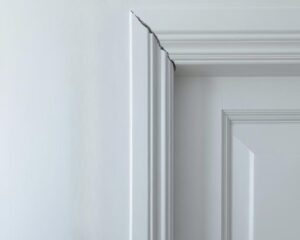
Wall cracks are a common issue for homeowners, but not all are cause for alarm. This article explores different types of cracks and helps you identify when to take action. From fine lines caused by natural settling to deep, jagged fissures that might suggest structural damage, it’s crucial to know what to look for. In this article you’ll get an insight into what these cracks may mean for your home.
Why Do Cracks Appear in Walls?
- Natural Settling: New homes or homes on unstable soil can develop minor cracks as they settle.
- Temperature Changes: Expanding and contracting materials, especially bricks, often lead to small cracks.
- Moisture: Excess moisture from leaks can weaken the walls, creating visible cracks.
- Foundation Shifts: More serious cracks may result from foundation issues, especially in older homes.
4 Types of Wall Cracks and What They Mean
1. Hairline Cracks
- These are often harmless, resulting from minor settling or material expansion.
- Typically less than 1mm wide, they can usually be repaired with filler or paint.
2. Vertical Cracks
- Small vertical cracks under 5mm are common and typically indicate normal settlement.
- However, if the crack grows over time, it could point to more significant issues like a shifting foundation.
3. Horizontal Cracks
- These are more concerning as they may suggest serious structural stress.
- Cracks running horizontally often occur in foundation walls and might indicate excessive pressure from soil or poor construction.
4. Diagonal Cracks
- Often seen around windows and doors, diagonal cracks suggest foundation settlement or uneven soil movement.
- Wider cracks that are jagged or appear quickly require immediate inspection.
When Should You Worry About Wall Cracks?
- Cracks Wider Than 5mm: Cracks wider than a few millimetres could indicate serious underlying problems.
- Rapidly Growing Cracks: If a crack appears suddenly or grows quickly, it’s likely more than just cosmetic.
- Cracks with Moisture: Moisture can make cracks worse and lead to mould. These need immediate attention.
- Cracks Near Corners: These may indicate movement in the foundation or walls, which could affect structural stability.
Most wall cracks are cosmetic, but anything deeper or expanding can be a sign of a serious problem. Large horizontal cracks are an early sign of foundation damage, which should never be ignored.
3 Steps on How to Address Wall Cracks
- Monitor the Crack
- Keep an eye on new cracks to see if they widen or grow.
- Mark the edges of the crack and recheck regularly.
- Repair Cosmetic Cracks
- Small cracks can often be fixed with filler, sanding, and repainting.
- For slightly larger cosmetic cracks, a plasterer can help with a smoother finish.
- Seek Professional Help
- When cracks are wide, horizontal, or growing rapidly, consult a structural engineer.
- A professional will inspect the foundation and suggest solutions like underpinning or wall reinforcement.
The Impact of Foundation Movement on Cracks
Foundation movement is often a leading cause of significant wall cracking. Foundation shifts can occur due to fluctuating moisture levels in the soil, poorly compacted ground, or ageing building materials. If left untreated, these issues could escalate, causing further cracking, floor sloping, and eventually jeopardising the home’s integrity.
Final Thoughts on Wall Cracks
Wall cracks are a natural occurrence in most homes, but knowing when they signal a bigger issue is key. Always monitor cracks for changes, particularly those wider than 5mm or running horizontally. In cases where the foundation is involved, it’s crucial to seek professional help early on to prevent further damage.
